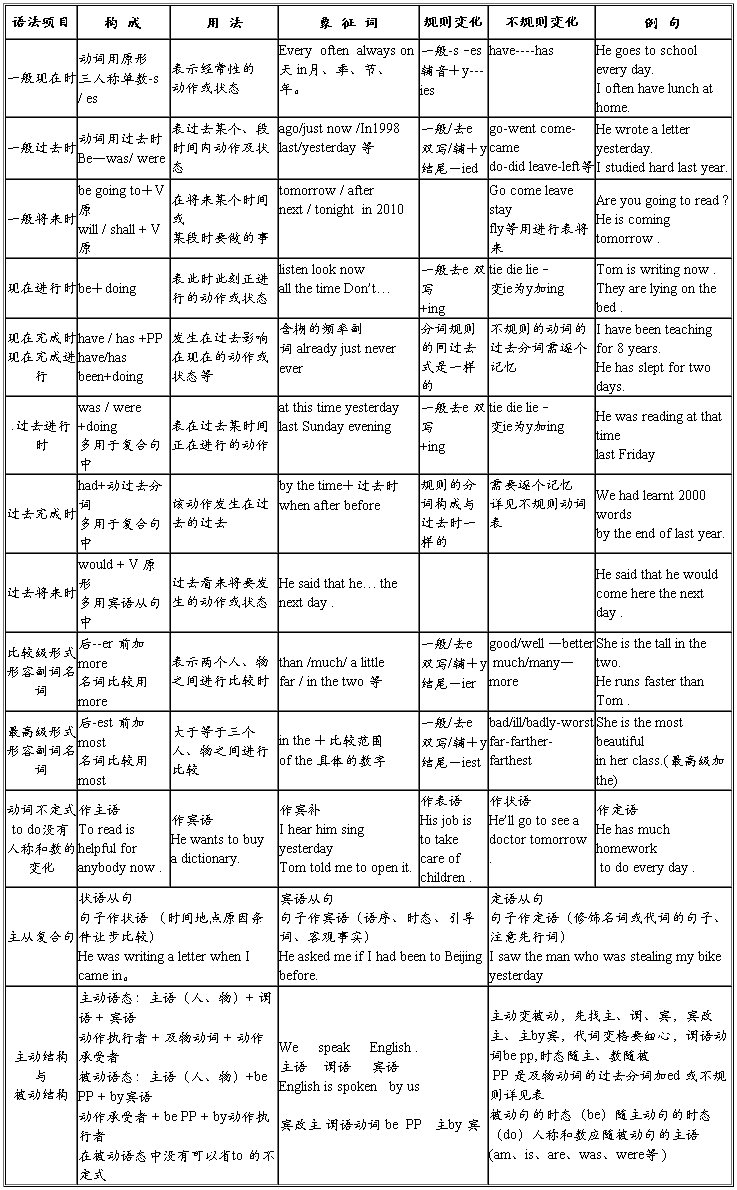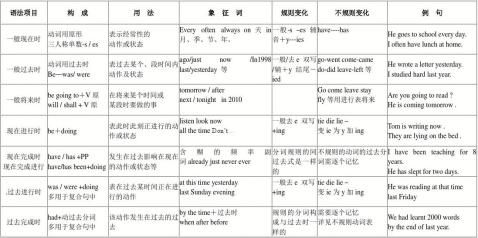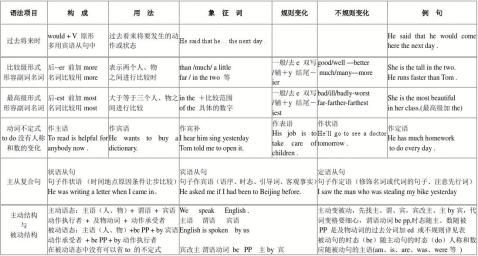初中英语语法整理
1(see 、hear 、notice 、find 、feel 、listen to、look at(感官动词)eg:I like watching TV 2(比较级 and 比较级) 表示越来越怎么样
3 a piece of cake =easy 小菜一碟(容易)
4 agree with sb 赞成某人
5 all kinds of 各种各样 a kind of 一样
6 all over the world = the whole world 整个 世界
7 along with同……一道,伴随…… eg : I will go along with you我将和你一起去 The students planted trees along with their teachers 学生同老师们一起种树 8 As soon as 一怎么样就怎么样
9 as you can see 你是知道的
10 ask for ……求助 向…要…(直接接想要的东西) eg : ask you for my book
11 ask sb for sth 向某人什么
12 ask sb to do sth 询问某人某事 ask sb not to do 叫某人不要做某事
13 at the age of 在……岁时 eg:I am sixteen I am at the age of sixteen
14 at the beginning of …… ……的起初;……的开始
15 at the end of +地点/+时间 最后;尽头;末尾 eg : At the end of the day
16 at this time of year 在每年的这个时候
17 be /feel confident of sth /that clause +从句 感觉/对什么有信心,自信
…… …… 余下全文








